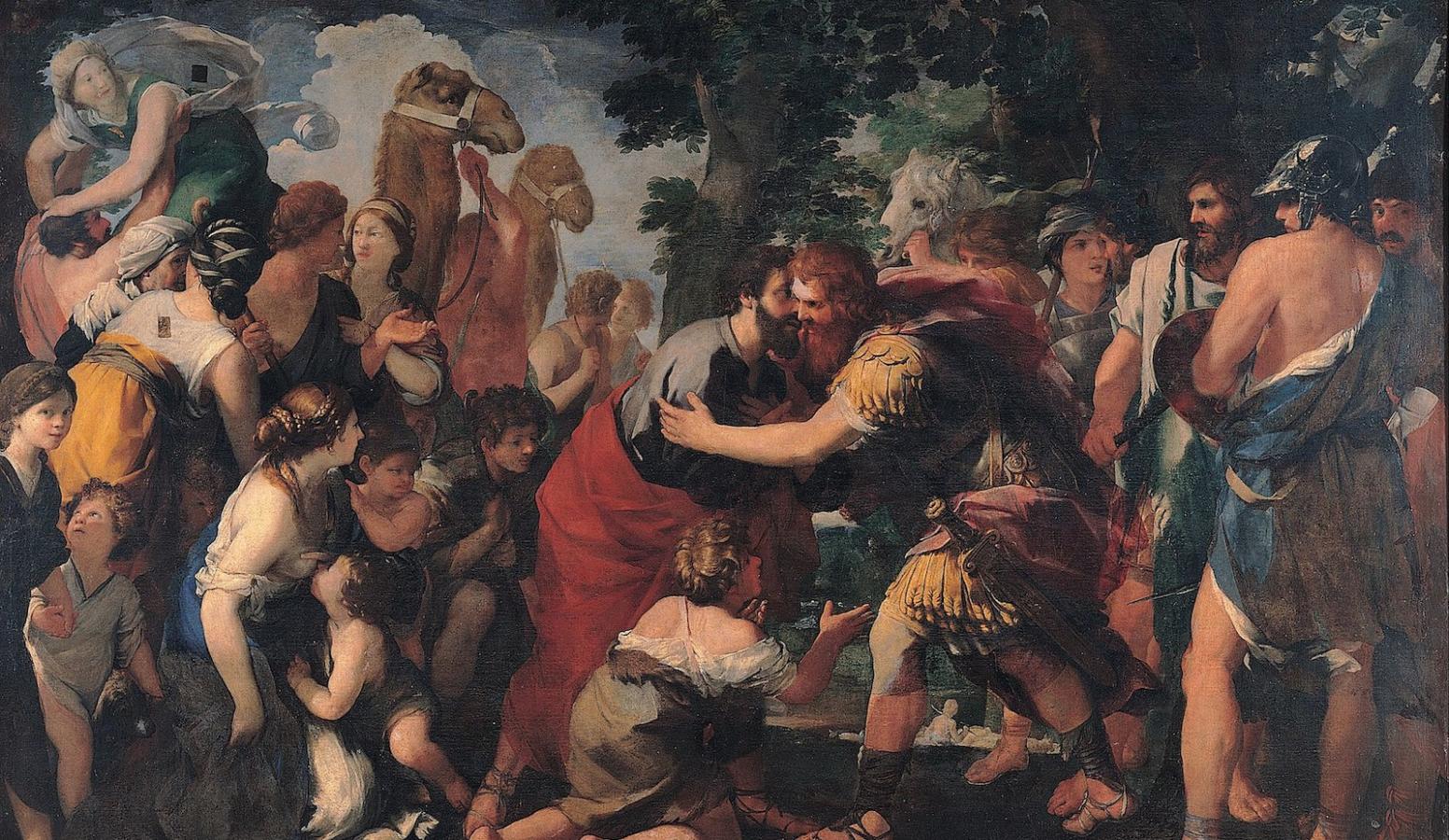Commentary on Parashat Vayishlach, Genesis 32:4-36:43
In Parashat Vayishlach, Jacob makes plans to return to the land he had fled 20 years before. Assuming that his twin brother Esau still wants revenge for being defrauded of their father’s blessing, Jacob devises several contingency plans. Yet, when the two brothers finally meet, Esau runs to embrace him. Jacob declares, “When I see your face, it is like seeing the face of God (Genesis 33:10).”
Many medieval commentators hold Jacob blameless in the betrayal of Esau and explain his use of obsequious language and flattery during their reunion as a clever ploy to protect his family rather than an acknowledgment of wrongdoing. Some contemporary readers see the story as one of genuine forgiveness. Jacob wrestles with an angel–that is, his conscience–and is changed. Esau finds it in himself to respond to his brother with love.
Regardless of the interpretation we ascribe to this event, however, the brothers do not live together happily ever after. Almost immediately after their reunion, they separate again–Esau goes to Seir, Jacob heads to Sukkot. They come together only once more, to bury their father Isaac. This is not a true reconciliation, but rather an uneasy détente like that between the former Soviet Union and the United States in the final years of the Cold War. For two countries separated by oceans, like the two brothers divided by long distances, this may have been the most reasonable first step.
What Could Have Been
In today’s world, however, most significant conflicts happen within countries–for all parties, there is no option to “go their separate ways.” Even in the case of atrocity crimes, survivors must inhabit the same land as those who have perpetrated horrific violence against them. In many of these cases, however, victims and perpetrators are seeking ways to transcend cycles of violence and to achieve reconciliation.

Help us keep Jewish knowledge accessible to millions of people around the world.
Your donation to My Jewish Learning fuels endless journeys of Jewish discovery. With your help, My Jewish Learning can continue to provide nonstop opportunities for learning, connection and growth.
Since 1973, more than 20 reconciliation commissions have been established in countries across the world–from Argentina to Zimbabwe, from Rwanda to Sierra Leone. Not surprisingly, after a conflict ends, each side has its own version of “what really happened.” By providing a forum for survivors and perpetrators to tell, record, and acknowledge their stories, these commissions can provide the means for people to move toward sustainable relationships.
If only this had happened with Jacob and Esau. If only we heard from Esau, “You betrayed me and robbed me of my future. Despite that, I promise not to take revenge.” And from Jacob, “What I did was wrong. I promise not to do it again.” Then, possibly, the emotional moment of reunion could have pointed the way to a true reconciliation. Instead, Esau’s descendants became the people of Edom who aided in the slaughter of Jews when Nebuchadnezzar plundered Jerusalem (Obadiah 1:11-14). Détente was not enough.
Reconciliation Commissions
In our time, in the former Yugoslavia, myths, resentments, and distortions that festered for centuries burst into ethnic cleansing and slaughter. When the Serbs attacked Muslim Albanians in Kosovo in 1989, they invoked as justification the violence perpetrated against Serbs by Muslims at Kosovo in 1389. In the Balkan wars, the unresolved past so poisoned the present that reporters were uncertain whether the people they spoke to were referencing crimes that had happened the day before, in 1941, in 1841 or in 1441.
“How do you keep the past alive without becoming its prisoner?” asks Chilean playwright Ariel Dorfman. In national reconciliation efforts, perpetrators of crimes must acknowledge the pain they have caused and promise to cease. The survivors must be given a space to tell their stories and must promise not to seek retribution.
The most famous model for this process is the South African Truth and Reconciliation Commission (TRC), established in 1995. The TRC spent years hearing public testimony and provided an imperfect but effective path to establishing a civil society. “Nowhere in the history of atrocities have we seen victims and perpetrators sharing a common idiom of humanity in the way that was sometimes observed [here],” said Pumla Gobodo-Madikizela, a member of the Commission.
The expectation was neither for “encyclopedic truth” nor for “total reconciliation,” says Archbishop Desmond Tutu, the Commission’s co-chairman. Rather, the hope was to provide critical first steps and a “beacon of hope” for other nations trying to come to terms with past conflicts.
The missed opportunity in the story of Esau and Jacob reminds us that the path to true reconciliation must begin with a way to visit the past, the courage to remember one’s own pain, and the willingness to hear the other.
Provided by American Jewish World Service, pursuing global justice through grassroots change.



